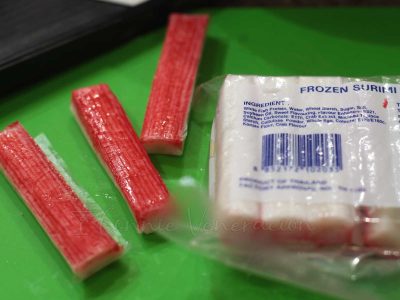When I make bone broth, I spend around 15 minutes spooning off scum that floats on top of the liquid. Some people say it is unnecessary. Scum, they say, is without flavor and it won’t harm the flavor of broth. It won’t kill us either because there’s nothing toxic in it. So, do you really need to skim scum on the surface of your bone broth?
What is scum?
Scum is the foam or froth that floats on the surface of liquid. Not just broth but other liquids as well. But since this is about the scum that forms when making bone broth, I won’t bother about the “other liquids” anymore.
Some refer to scum as “impurities”, others call it a harmless protein and some others label it as lipoprotein. Whatever its exact definition, I don’t want it in my broth. If I want bits of solids or semi solids in my broth, they better be things that I dropped into the pot rather than bits that I neglected to remove.
How is scum removed?

If you did nothing to lessen or prevent the formation of scum (more on pre-empting the formation of scum below), a grayish froth will float to the surface. Small bits at first until, finally, most of the surface of the liquid is covered with the foamy substance. How do you remove the scum?
The first thing to remember is that the scum must be removed before the liquid reaches boiling point. By that time, the scum will start boiling into the liquid. Even if you strain the broth later with a double layer of cheesecloth, the scum cannot be completely removed.
So, while the liquid is just starting to bubble and up until it reaches simmering point, remove the scum. Place a bowl on the counter as near the pot as safely possible. Take a large spoon or a strainer (there is a shallow strainer specifically meant for skimming off scum) and just scoop out the scum and dump into the bowl.
Do the spoon-and-dump process repeatedly. It takes anywhere from 10 to 20 minutes depending on the amount of bones in the pot. When the surface of the liquid is free from froth, cover the pan and simmer the bones to make bone broth.
Fat is not scum

So that’s how a scum-free cooking liquid looks before the pan is covered. I use a large pot for making bone broth. When it is ready, I cool the liquid then strain it into half gallon containers. I keep the containers in the freezer and take out only what I need for a particular dish.
If you freeze or chill broth, you might notice that, on the surface, a layer forms on top that doesn’t look like frozen broth at all. That is fat. You have the option of scraping it off or leaving it there. I leave it there. Fat is not scum. It is flavor.
Is there a way to prevent scum from forming?
From my experiences, yes. There are three ways to prevent scum from forming completely and there is one way to minimize its formation.
Let’s go backwards and start with minimizing the formation of scum.
Most cooks say that when making broth, we should start with cold water. Put the bones and veggies in a pot, fill up with tap water and set on the stove. That was how I did it for years until I realized that it was the best formula to ensure the formation of scum—lots of scum. So, I experimented and discovered that by adding bones to furiously boiling water, the scum that floated on the surface was considerably reduced.
Useful information, yes? But why go for reduction of scum when its formation can be totally prevented? How to do that?
Here are three ways:
1. Trim the bones of all meat. Scum comes from the meat, not the bone.
If using bones with bits of meat attached to them and you do not want to remove the meat:
2. Roast the bones in the oven until browned and no “bloody” juices ooze out—30 to 40 minutes at 400F—before adding them to water in a pot. The downside is that roasted bones make a dark broth.
3. Place the bones in a pot, cover with water and boil—not simmer—for 10 to 15 minutes. Strain the bones, throw out the water then rinse each piece of bone under the tap until no impurities fall out. Clean out the pot or get a clean one, put the bones in, cover with water, add aromatics and simmer away.







